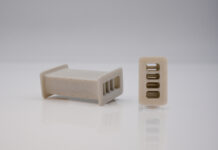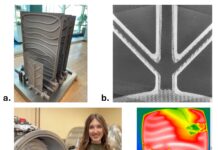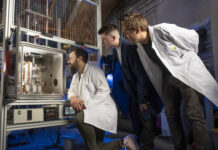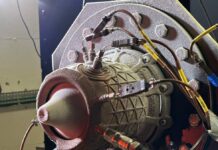Lithoz will 3D print ceramic heat exchanger for hydrogen-electric propulsion systems
Ceramic 3D printing company Lithoz is embarking on a new project funded by the EU: the TRIATHLON. The project brings together universities, industrial designers,...
A Honeywell-led consortium to explore how AI and additive manufacturing can improve aerospace technologies
A consortium led by Honeywell has received UK Government funding for a project that will explore how Additive Manufacturing (AM) can improve complex environmental...
Thermwood and Purdue University merge predictive simulation with large-scale 3D printing
“First-time-right” production in Large Format Additive Manufacturing (LFAM) of advanced composite parts is like asking someone to marry you on the first date.
In LFAM,...
3D Systems receives FDA approval for custom 3D printing solution to repair damaged nerves
Additive Manufacturing company 3D Systems has partnered with TISSIUM, a French MedTech company, on the development of a bespoke 3D printing solution for the repair...
Cutting heat pipe weight by 50% with 3D Systems’ AM and new materials for space applications
Two projects funded by NASA shed light on the use of a material that is not always used in metal AM: nitinol.
This metal alloy...
Combining laser sintering with a technique similar to SLA to manufacture ceramics
Researchers from NC State University have explored the use of lasers to create ceramics that can withstand ultra-high temperatures. The technique can be used...
ASTM International partners joins forces with OEMs to launch an Additive Manufacturing Certification Program
ASTM International’s Additive Manufacturing Center of Excellence (AM CoE) has launched a new manufacturer certification program designed to enhance quality assurance, regulatory compliance, and...
New lab to test the structural integrity of 3D printing materials in space-like conditions
Until now, no research facility has been dedicated to ensuring that polymers, ceramics and metals printed in orbit will be able to withstand the...
LFAM: LEAP 71 to develop meganewton-class propulsion systems
As part of its rocket engine program and on the heels of the validation of smaller-scale engines, global software developer LEAP 71 plans to...
New agreement to enable the University of Waterloo to explore repair capabilities for metal 3D printed parts
OEM Nikon, and AP&C, a Colibrium Additive company, part of GE Aerospace, signed a sponsored research agreement that will enable the University of Waterloo...












